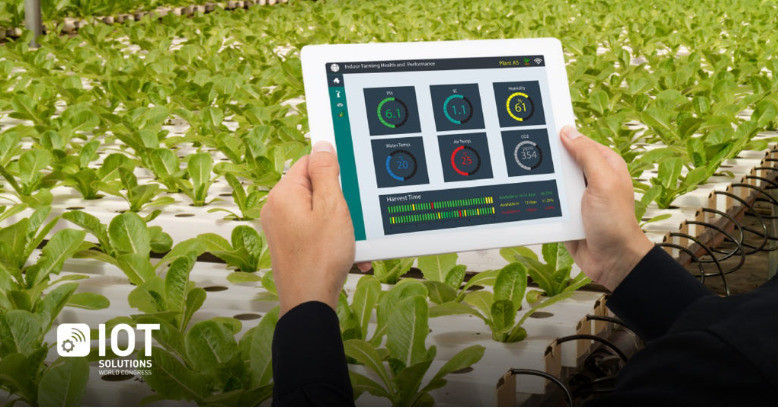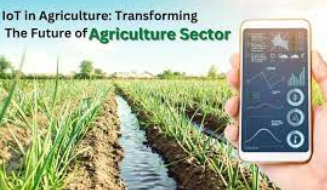The world is facing increasing challenges in the field of agriculture, from feeding a growing population to addressing climate change. Fortunately, advancements in technology, particularly the Internet of Things (IoT), have opened up new possibilities for the agricultural industry. IoT in agriculture has the potential to revolutionize the way we farm, enabling smarter, more efficient, and sustainable practices. In this blog, we will explore the various applications and benefits of IoT in agriculture.

Applications of IOT in agriculture
Smart Farming:
IoT technology allows farmers to monitor and control their farms remotely, leading to the emergence of smart farming. Sensors installed throughout the farm collect data on soil moisture, temperature, humidity, and other environmental factors. This data is then transmitted to a central system, which analyzes it to provide real-time insights. By monitoring these parameters, farmers can optimize irrigation, regulate temperature, and make informed decisions about planting, harvesting, and pest control.
Precision Agriculture:
Precision agriculture involves using IoT devices to gather precise data on crop health, nutrient levels, and other factors that influence yield. Drones equipped with cameras and sensors can capture high-resolution images of the entire field, enabling farmers to detect early signs of plant stress, disease, or nutrient deficiencies. This information allows for targeted interventions, such as applying fertilizers or pesticides only where needed, reducing costs and environmental impacts.

Livestock Monitoring:
IoT devices have proven to be invaluable in monitoring livestock health and well-being. Wearable sensors can be attached to animals to track vital signs, activity levels, and feeding patterns. Farmers can receive alerts in real-time if any abnormalities are detected, enabling them to provide timely medical attention or address potential issues like heat stress or malnutrition. This proactive strategy not only enhances animal wellbeing but also optimizes output and lowers losses.
Supply Chain Management:
IoT plays a crucial role in improving supply chain management in agriculture. By utilizing sensors and RFID tags, farmers and distributors can track the movement of crops and livestock from farm to table. This real-time monitoring ensures that products are handled properly, maintain quality, and reach consumers in a timely manner. IoT also enables traceability, allowing consumers to have greater transparency and confidence in the origin and quality of the food they consume.
Resource Optimization:
IoT technologies help farmers optimize the use of resources, such as water and energy. Real-time data from sensors can determine the exact amount of water required by crops, minimizing water waste. Similarly, smart systems can regulate energy consumption in farm operations, reducing costs and environmental impact. By efficiently utilizing resources, farmers can achieve sustainable practices and contribute to a greener future.
Conclusion
The integration of IoT in agriculture holds great promise for transforming the industry. By leveraging smart farming techniques, precision agriculture, livestock monitoring, and improved supply chain management, farmers can maximize productivity, reduce costs, and promote sustainability. However, it is essential to ensure that these technologies are accessible to all farmers, regardless of their scale or location. With continued advancements in IoT, agriculture has the potential to become more resilient, efficient, and capable of feeding the growing global population.






